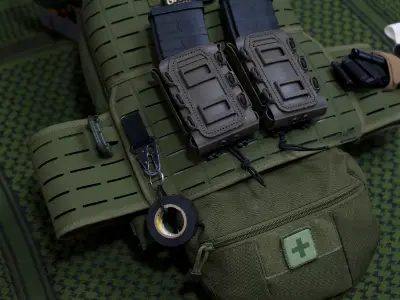

When it comes to preparing for a mission or outdoor adventure, having the right tactical equipment is imperative. Essential gear can range from protective clothing and sturdy footwear to specialized tools and communication devices. Choosing the appropriate tactical equipment requires understanding its purposes, functionality, and the specific demands of the environment you'll be facing. Below, we delve into the intricacies of selecting tactical gear that not only meets your needs but also ensures safety and efficiency. Keep reading to make an informed decision about the equipment that will serve you best in the field.
Understanding Tactical Equipment: The Basics and Importance
Tactical equipment includes a wide range of gear built for demanding environments, often used by military, law enforcement, and outdoor professionals. Its primary purpose is to protect, support survival, and boost task performance under tough conditions, making reliability and durability essential qualities in every item.
High-quality security supplies, such as body armor, night vision equipment, and tactical backpacks, are designed with functionality and adaptability in mind. Key features such as tough materials, ergonomic designs, and gear compatibility help ensure top performance and safety during critical missions.
Assessing Your Tactical Equipment Needs: Activity and Environment Considerations
When moving, promptly update your contact information with postal services, banks, and government agencies to ensure uninterrupted communication and services. Familiarize yourself with local regulations, such as parking permits, and update your driver’s license, vehicle registration, and voter registration to comply with new area requirements.
Protect vital documents by organizing personal records, such as birth certificates and social security cards, and ideally storing them in a fireproof lockbox at your new home. Gather warranties and instruction manuals for your home’s appliances and systems in one place, which will help streamline future repairs or troubleshooting efforts. These steps help maintain order and compliance during the transition to a new residence.
Durability and Performance: Evaluating Quality and Brands
Durability and performance are critical in tactical gear, relying on high-quality materials like Cordura or ballistic nylon and reinforced stitching. Key components such as zippers and buckles must withstand heavy use. Brand reputation also plays a major role—established manufacturers with consistent positive field reviews often offer more reliable equipment.
Look for gear that meets recognized industry standards or certifications, such as NIJ for body armor, to ensure tested durability. After-sale support and warranty services are essential, as they reflect the brand’s confidence and customer commitment, providing assurance should the equipment fail during demanding use.
Comfort and Fit: Ensuring Tactical Gear Suits Your Body Type
Tactical gear must suit the wearer’s body type to ensure mobility, performance, and long-term comfort. Ill-fitting items like vests or harnesses can restrict movement and cause discomfort or injury. Accurate measurements and adjustable features are essential for a snug yet comfortable fit. Functional gear should include padding, breathable fabrics, and modular components for customization.
Weight is also critical—lightweight yet durable materials help maintain stamina and agility. Designs that evenly distribute weight reduce fatigue during extended wear. Testing gear with a full range of motion before purchase helps ensure it integrates seamlessly into the user’s activities without causing distractions or limitations.
Staying Within Budget: Finding Balance Between Cost and Quality
Balancing cost and quality is crucial when selecting tactical gear. While high prices don't always mean better performance, the cheapest options can lack vital features or reliability. It's smart to invest more in critical items like body armor and footwear, while cutting costs on less essential gear. Durable, multifunctional equipment often saves money in the long run by reducing replacements.
Buyers can find affordable options through seasonal sales, surplus stores, and reputable second-hand markets, provided the gear is authentic and in good condition. Creating a budget and comparing prices across suppliers ensures smarter purchasing, keeping safety and performance at the forefront.
Overall, choosing the right tactical equipment is a complex but crucial process that requires careful consideration of needs, environment, quality, comfort, and budget. By prioritizing these aspects and investing wisely, individuals can ensure they are adequately prepared for any situation with gear that enhances their safety and operational capabilities.






Comments
Post a Comment